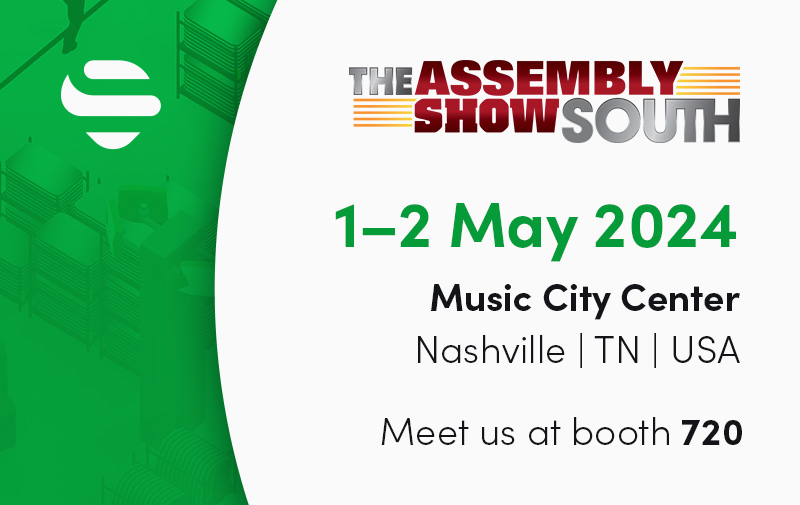
[Video]: Pioneering Integration of AI & RTLS: Task Management Mastery in Manufacturing
By Henrieta Hyrlikova | January 15th, 2024 | 4 min read
If you ever wondered what the future of warehousing and materials handling looks like, it’s all about efficiency. Every move is orchestrated seamlessly, while insights, such as order completion rates or start and stop times, are gained effortlessly.
Such is the shop floor of Kumi Canada Corporation after implementing Task Engine Distributor (TED) by our gold partner Portable Intelligence Inc. A powerful AI integrated with Sewio RTLS now helps Kumi — an automotive plastic molding supplier — to optimize the efficiency of its material-handling fleet by simplifying navigation through the warehouse.
Monitoring, Analyzing, and Increasing Productivity in Real-Time
As a part of Portable Intelligence’s AI-driven warehouse automation platform Smart Warehouse, TED aids Kumi in maximizing productivity, visibility, and control thanks to its real-time forklift tracking and task management features.
Using data collected by the Sewio UWB RTLS Platform, it runs a real-time productivity analysis, reporting on a range of productivity metrics including average task time, tasks completed, and overall operational efficiency (OEE). Based on the analysis, the software dynamically assigns tasks to drivers depending on location, equipment, and availability and provides them with needed instructions.
“Before we implemented TED, there was confusion of where to go, what to do.” — Sithon Thepparath, M/S Assistant Manager
Boosting Task Execution
Having its operations streamlined helped Kumi boost the line and task completion rate up to 98%. The impact on Kumi’s business was even more obvious when the engine was on pause due to a configuration change. Although the task distribution was restored quickly, TED’s mission-critical value to Kumi has already become indisputable.
“I would have to think about how I can go from one line to another. I’d have to figure out what to do next, whereas now, TED can tell me exactly where I need to go and when.” — Nicholas Cardone, Forklift Driver
Eliminating Routing Inefficiencies
Similarly, the insights provided by the AI in combination with RTLS and real-time production analysis were used to eliminate routing inefficiencies on Kumi’s shop floor, bringing in notably reduced travel times. After the configuration adjustment, the company was able to reduce the daily travel distance of forklift drivers by tens of kilometers. Meanwhile, forklift downtime decreased dramatically by as much as 25% per day.
Besides route optimization, the system can also prevent driver congestion and collisions, which inherently means enhanced safety.
“We realized that in some cases, drivers were driving up to 50 kilometers a day on the floor. We were able to change the configuration, reducing their travel time way down and improving their efficiencies.” — Paul Andrews, Senior Manager, Information Systems Group & Human Resources
Improving Forklift Operators’ Training
Another layer of production that can be significantly improved thanks to indoor tracking is training. Before implementing TED, Kumi’s newcomer operators had to learn everything about daily operations, which made their initial training rather challenging and time-consuming.
With TED, this is no longer an issue, as task management, resource allocation, and routing are well taken care of by artificial intelligence.
“With newer operators, it was a challenge to train them and to have them learn the operations on a day-to-day basis. It takes the guesswork and the extremely long period of learning out of the equation.“ — Mike Eaton, ISG Manager
Continuous Improvement in Kumi Canada Provided by PI’s TED and Sewio’s RTLS

TED’s integration with Sewio RTLS has not only boosted the efficiency of Kumi’s operations but has set a new standard for the future of warehousing and productivity. By utilizing the power of AI, indoor tracking, data analysis, and task optimization; the plant’s managers were able to accomplish remarkable improvements in task distribution, order completion, forklift movement, safety, and training.
Kumi’s success story exemplifies how UWB-powered RTLS can transform traditional manufacturing operations into highly efficient and agile processes, paving the way for a more productive, sustainable, and safer future of warehousing.
If you are interested in maximizing efficiency through mastery of task distribution, make a step into the future of warehousing and contact us today.



